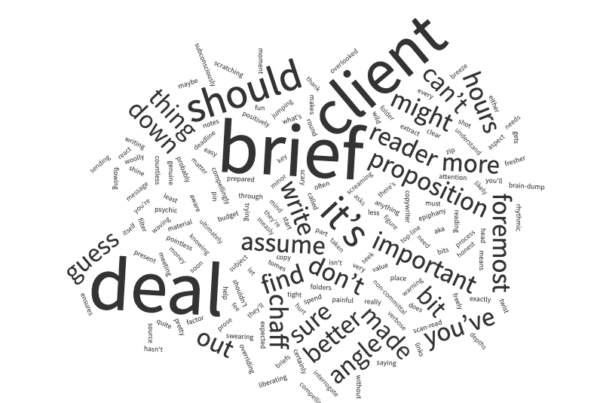Of course, to write effectively on a business’ behalf, you need to know your audience. You need at least an overview of what matters to them, the problems you can solve for them, what makes them happy, and so on. And you need to be able to distinguish your brand from all the others vying for the same audience’s attention.
But here’s the thing…
When you write for that audience, by far the best policy is to write for just one person.
For starters, it takes away the pressure of addressing a huge, faceless crowd. You’re probably more relaxed talking to one person about what you do (and why it matters to them) than being on the spot in front of thousands, trying to impress them all. On the whole, impactful and persuasive copy isn’t a momentous address, or the written equivalent of a mic-drop moment. Really, it’s about engaging one other human, who simply represents your wider audience. The good news is, it’s so much easier to write this way, too. It also feels way more natural – to you and to them.
So before you start, conjure up that singular representation. Picture your one reader. Get a feel for what makes them tick, what problems they need solving, and how your proposition could make them so much happier.
Then talk to them…
Talk to them, instead of at them. Show your awareness of who they are, and reward them for reading beyond your first sentence – which should ideally mention them, or at least something that matters to them. Then relate to them throughout as ‘you’, and address any needs, questions or concerns they might have. Be intimate (without being weird), and make your time together worthwhile!
Also, let them breathe…
Let’s say you’re in the foyer at a conference, or you’ve secured a meeting with a potential new client. Or you’ve simply got talking to someone in a café or bar about what you do. You might sense an opportunity to sell, but you don’t just rattle off a rehearsed pitch while staring into space. Hopefully not, anyway. You use emphasis and rhythm in your voice. You ensure eye contact, and try to gauge their level of interest or understanding. You seek ways to make what you’re saying more personal and relevant. You try to develop a sense of when to provide more detail, and when to move on.
‘But I can’t see them!’
Sure, you’re doing this blind when writing, but picturing a one-to-one with your reader is a really useful way to scrutinise your words, and to stay human and relatable. If you’re happy it will attract, engage and persuade them, there’s no reason it won’t do the same for everyone else.
In other words, look after the singular reader that best represents your audience, and the rest will be just fine.




